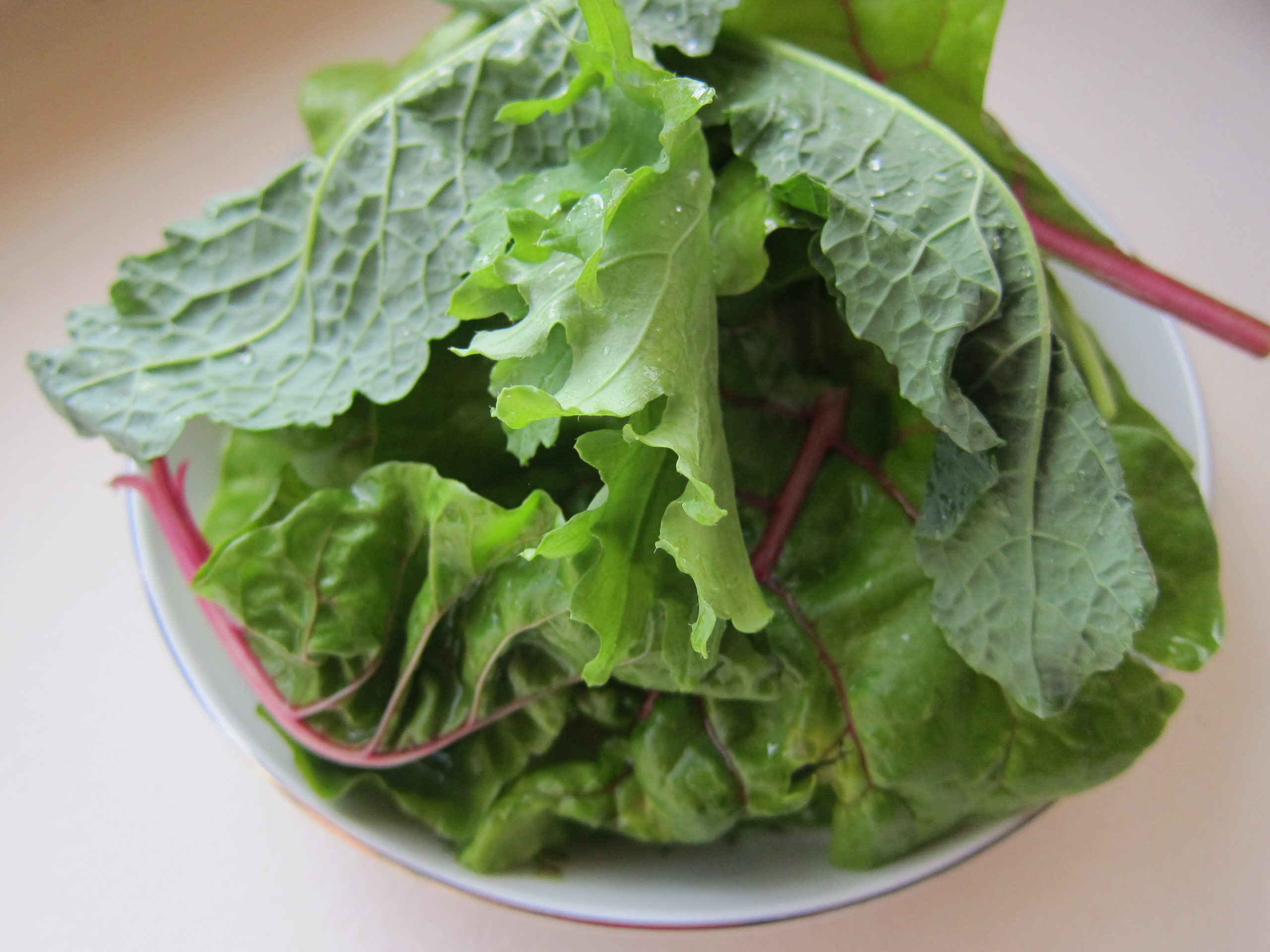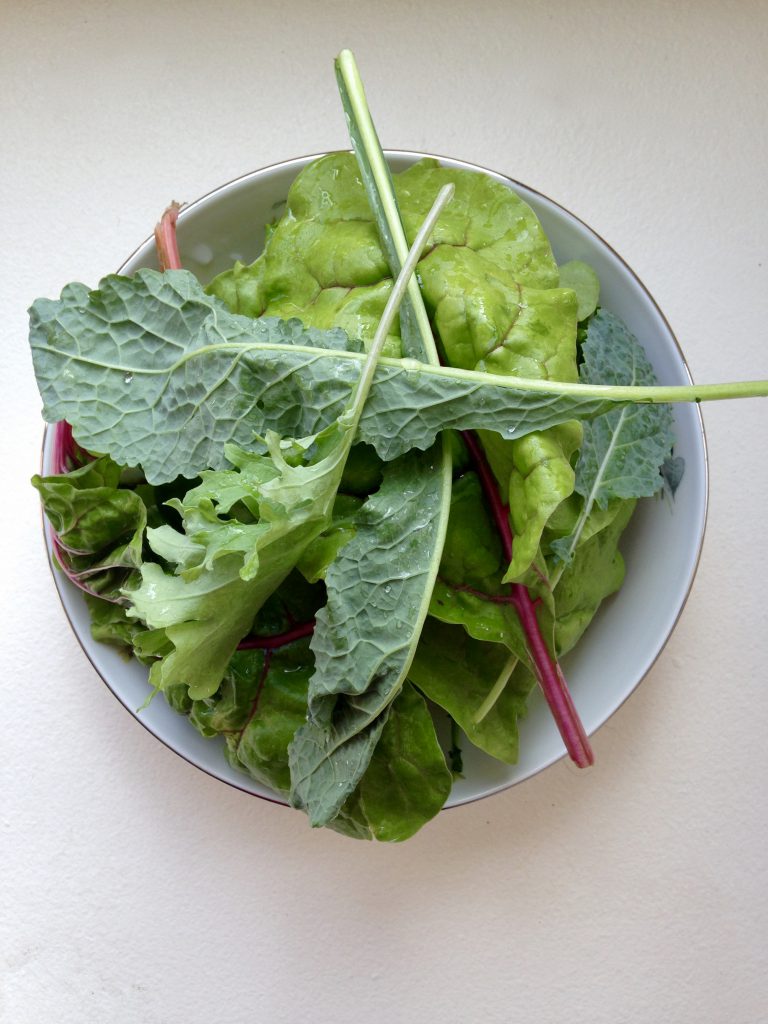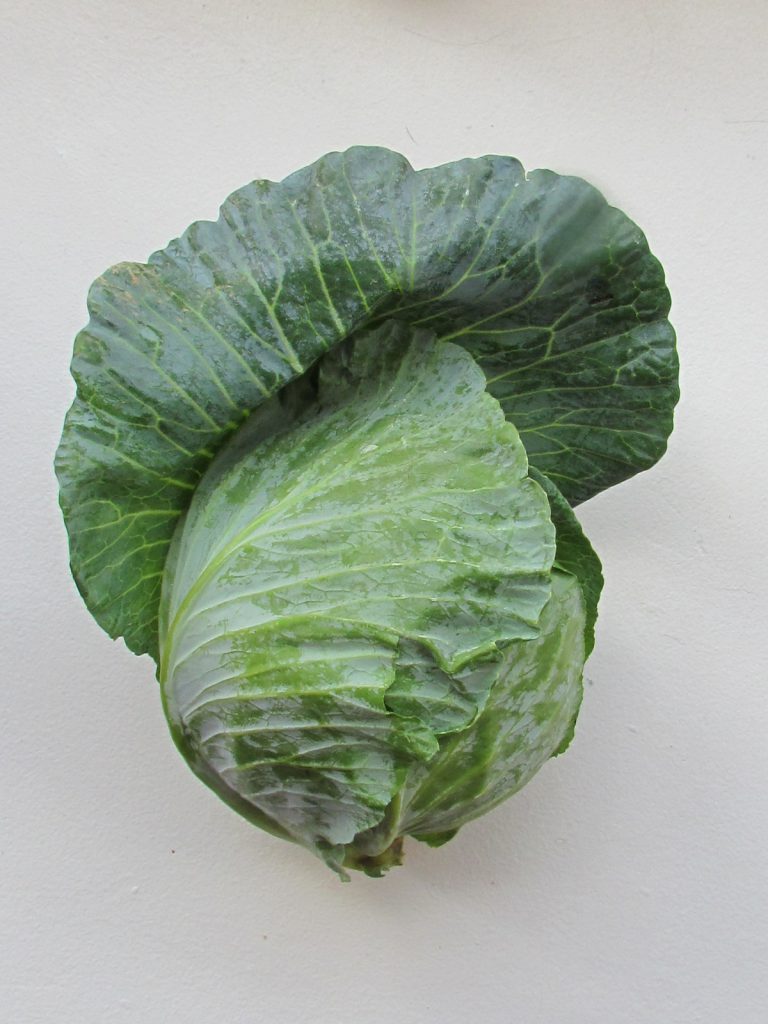
While we frequently hear how important it is to “eat your greens”, what we don’t hear is how important it is to eat a wide variety of greens! While greens — lettuces, cruciferous leafy greens, spinach, chard, and more — are indeed nutritional powerhouses, they don’t all supply the same nutritive benefits. While one variety might be high in Vitamin C (broccoli), another might provide a healthy dose of protein (Brussels sprouts). To get the full nutritional and antioxidant benefits of greens, plan to eat a wide variety; It is recommended that everyone eat a minimum of 1/2 cup cooked greens every day (more if you’re eating them raw).

Eat a variety of kale, chard, spinach, lettuce, and more for overall nutrition.
Check out the table below for an overview of the nutritional values for 14 green leafy vegetables. There are some surprises, and some things to keep in mind:
- Spinach is famous as a hard-hitter when it comes to iron, but it turns out that it’s not the best source among the leafy greens. Both beet greens and Brussels sprouts provide more iron than spinach.
- If you’re watching your carbs, be aware that broccoli, Brussels sprouts, and cabbage are much higher in carbohydrates than other greens. But don’t let that stop you from eating them, as each has its own unique nutritional profile! Just be sure to even out those servings with lower-carb greens like lettuce, rapini, and Swiss chard.
- The nutritional value of leafy greens, and other vegetables, changes when cooked. Raw spinach, for example, has 99 mg of calcium per 100 g of spinach. After you cook it, however, the calcium skyrockets to 136 mg for the same weight of spinach. (Search for the nutritional values of both raw and cooked vegetables here.)
- But the reverse is true, as well. When vegetables are cooked, water-soluble nutrients like Vitamin C and Vitamin B decline. Freezing can also impact nutrition levels. The truth is, there is no best way to cook (or not) leafy greens or any other vegetable.
- For the best nutrition, include a variety of leafy greens in your diet, and eat them using a variety of cooking methods.
|
Nutritional Value per Cup of Leafy Greens (raw, chopped) |
|||||||||
|
Minerals (mg) |
Vitamins (mg) |
||||||||
|
Fiber |
Carbs | Protein | Calcium | Potassium | Iron | C | K |
A, IU |
|
| Arugula |
0.2 |
0.36 | 0.26 | 16 | 37 | 0.15 | 1.5 | 10.9 |
237 |
|
Bok choy |
0.7 | 1.53 | 1.06 | 74 | 176 | 0.56 | 31.5 | 31.9 | 3128 |
| Beet greens |
1.4 |
1.65 | .84 | 44 | 290 | 0.98 | 11.4 | 152 |
2404 |
| Broccoli |
2.4 |
6.04 | 2.57 | 43 | 288 | 0.66 | 81.2 | 92.5 |
567 |
|
Brussels sprouts |
3.3 | 8.95 | 2.97 | 37 | 342 | 1.23 | 74.8 | 155.8 |
664 |
| Cabbage |
2.2 |
5.16 | 1.14 | 36 | 151 | 0.42 | 32.6 | 67.6 |
87 |
| Chard (Swiss) |
0.6 |
1.35 | 0.65 | 18 | 136 | 0.65 | 10.8 | 298.8 | 2202 |
|
Collard greens |
1.4 |
1.95 | 1.09 | 84 | 77 | 0.17 | 12.7 | 157.4 |
1807 |
| Kale |
0.6 |
1.4 | 0.68 | 24 | 79 | 0.24 | 19.2 | 112.8 |
1598 |
| Leaf lettuce |
0.3 |
0.63 | 0.37 | 9.0 | 52 | 0.34 | 1.0 | 39.3 |
2098 |
| Rapini (rabe) |
1.1 |
1.14 | 1.27 | 43 | 78 | 0.86 | 8.1 | 89.6 |
1049 |
| Spinach |
0.7 |
1.09 | .86 | 30 | 167 | 0.81 | 8.4 | 144.9 |
2813 |
| Turnip greens |
1.8 |
3.92 | 0.82 | 104 | 163 | 0.61 | 33 | 138.1 |
6373 |
| Watercress | 0.2 | 0.44 | 0.78 | 41 | 112 | 0.07 | 14.6 | 85 |
1085 |

New Mexico-grown cabbage is nutritious, green, and leafy compared to cabbage that’s been shipped for hundreds of miles.
By, Christina Keibler


Are leafy greens healthier eaten or raw?
Thank you
The nutrition of all vegetables declines with cooking, but the healthiest greens are ones that are eaten regularly. So eating cooked greens more often provides more nutrition than eating raw greens less often (if you prefer cooking them).
I know you should eat a variety of greens but it is just me. Instead of alternating leafy greens by day can I mix them together and eat them daily. For example lets say , I buy spinach, kale, collard greens, chicory. Can I put them all in one container and eat a little of each one daily?
Hi Annette, thank you for reading. To answer your question, yes, that’s a great idea! It’s like making your own nutritional salad mix, which is spot on the advice in the blog post.